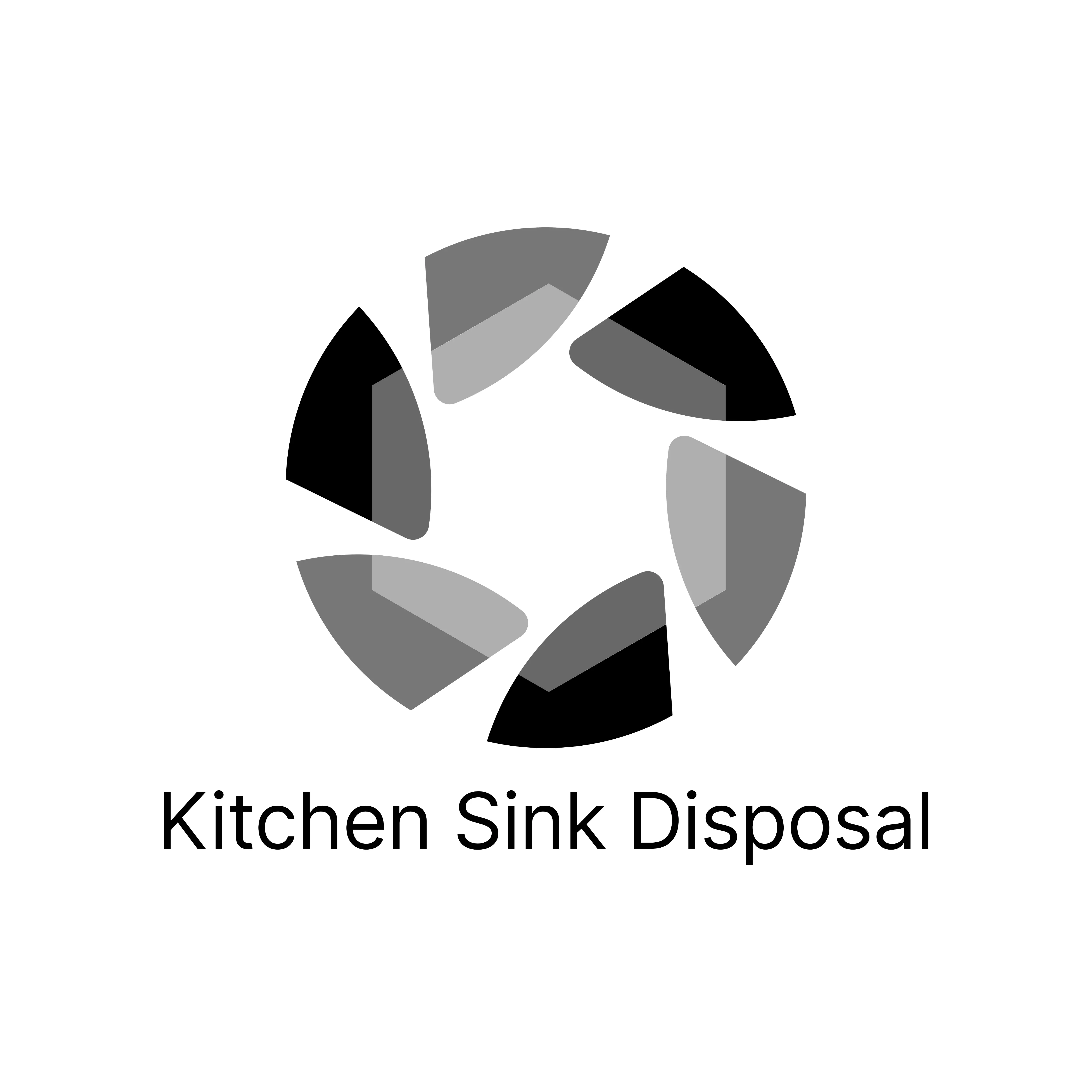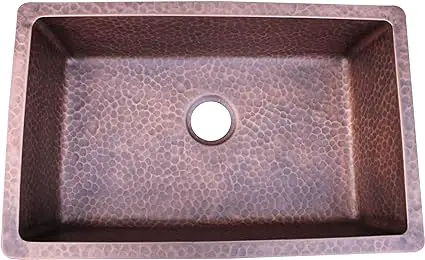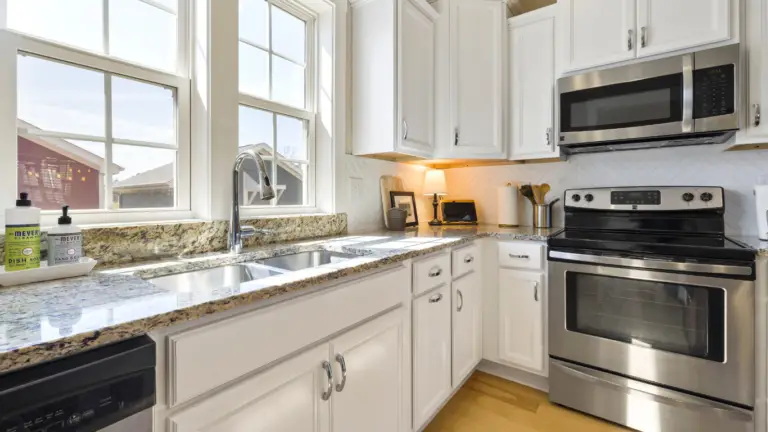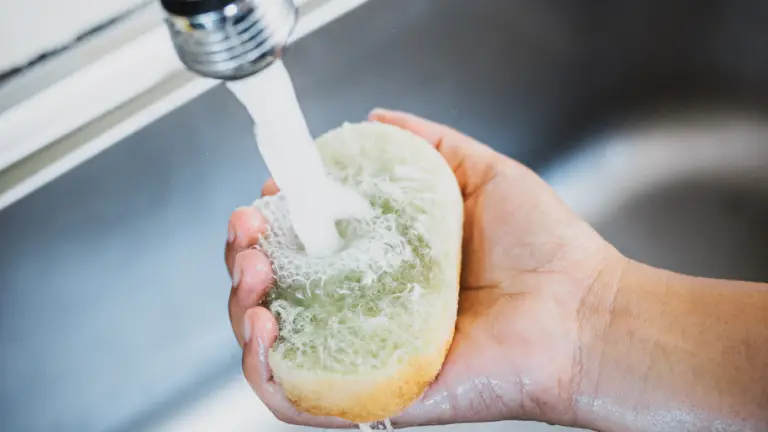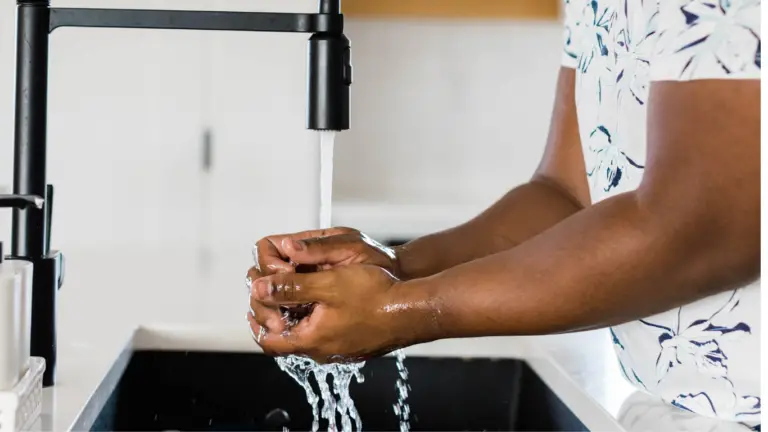How Many Sinks Should a Commercial Kitchen Have?
This post may contain affiliate links which means I may receive a commission for purchases made through links.

Whether you’re looking to rent or open a large restaurant or a tiny pastry shop, your commercial kitchen must have sinks. After all, where will you or your employees clean their hands, wash up cookware, and rinse the fresh produce?
There is one issue though; what is the ideal number of sinks for your commercial kitchen? In general, the local health and FDA Food Code departments dictate the number of sinks required in a commercial kitchen. However, there are several other factors you need to consider beyond the number of sinks when designing a commercial kitchen.
In this article, we’ll look at the different types of commercial kitchen sinks you can choose from as well as the optional features that make them ideal for specific tasks. But first, let’s look at how many sinks a commercial kitchen should have to ensure your business meets the minimum requirements and regulations.
How many sinks should a commercial kitchen have?
Many commercial kitchen establishments have 3 sinks, while large commercial kitchens may have several sinks. Either way, even the smallest restaurant should have at least 2 sinks. To be precise, you’ll need at least one double sink for rinsing and washing equipment, and one more sink just for washing hands. In addition, you may need separate sinks for food preparation and cleaning equipment or hands.
That said here are 3 main types of sinks you’ll find in most commercial kitchens;
- Food preparation sinks & basins. The kitchen staff solely use these sinks to prepare food, wash fruits & vegetables, and add water to the dishes when cooking.
- Hand washing sinks. These sinks are for sanitizing the kitchen staff’s hands before and after preparing food.
- Cleaning sinks. Lastly, the cleaning sink is where the kitchen staff will clean and rinse large cookware like utensils and soup pots after using them to prepare food.
The reason why most commercial kitchens require these 3 different sinks is to minimize the risk of cross-contamination. For that, it’s particularly important to differentiate between the food prep and sanitization sink to prevent bacteria from moving from one area to the next.
Important factors to consider when determining the number of sinks to have in your commercial kitchen
As already mentioned, every commercial kitchen requires at least 2- 3 sinks for different tasks. However, the exact number of sinks will vary from one establishment to the other since different kitchens require various sinks. For instance, if you’re operating a small cafe, you will not need the same number of sinks as a pub or restaurant that accommodates up to 100 guests.
With that in mind, here are some of the factors you should consider when determining the number of sinks you need for your commercial kitchen;
-
Staff
The number of staff you have in your establishment is an important factor to consider when determining how many sinks your commercial kitchen should have. For instance, you cannot have six kitchen staff crowding around the food preparation at any given time. Instead, your kitchen design should allow every staff to have their breathing space to increase safety and maximize efficiency.
-
Size of your establishment
The size of your establishment is the biggest factor you should consider when estimating the number of sinks to install in your commercial kitchen. Although the minimum number of sinks needed in any commercial kitchen is 3, you’ll need more sinks if you have a bigger kitchen space and serve more customers.
What is the best sink material for commercial kitchens?
In addition to ensuring that your commercial kitchen has the ideal number of sinks, it’s important to make sure that the sinks are from the right material. Otherwise, your commercial kitchen will not go very far.
Most commercial kitchen sinks are from high-quality stainless steel. All thanks to its sanitary, durable, and robust nature, making it ideal for heavy use. One thing you need to note though is that stainless steel is available in various grades; 304 and 430 grades.
304 stainless steel is a commercial-grade metal that is common in commercial kitchen sinks and tables. This stainless steel grade is also known as 18-10 as it both contains nickel and chromium, giving it exceptional corrosion resistance.
On the other hand, 430 stainless steel is less corrosion resistant than 304 stainless since it contains 0% nickel. However, it’s easier to replace and less costly to manufacture than its 304 counterpart.
Commercial Kitchen Sink Guidelines
Commercial kitchen sink guidelines are some of the most challenging aspects in a commercial kitchen design because of the variety and quantity that they need. In this section, we’ll be looking at some important guidelines you should consider when installing sinks in your commercial kitchen. However, it’s important to adhere to local requirements since these guidelines may vary from one place to another. Also, it’s important to involve a qualified restaurant consultant in your restaurant or commercial kitchen design to ensure you meet all the proper codes.
Typically, there are 2 types of connections when installing commercial kitchen sinks; indirectly drained and directly drained.
Direct-drained sinks are connected to the sewer via an S or P-type pipe system. In short, these sinks resemble the ones you find in a residential home.
On the other hand, the drain pipes of indirectly drained sinks empty into a floor sink and feature an air gap between the sink and the pipe. This design ensures that the discharge doesn’t come into contact with a food prep surface in case the sewer system backs up for whatever reason.
Moving on, most commercial kitchen design projects should at least have 4 types of sinks;
-
Mop sink
A mop sink offers a place for filling & dumping cleaning mops, mop buckets, and other cleaning tools. More notably, these sinks are usually directly drains and are not for use with any food products.
As for installation, you can either put mop sinks on the floor or mounted on legs to save employees from lifting heavy mop buckets. Most leg-mounted mop sinks have faucet cutouts to allow for the installation of splash-mounted faucets while floor sinks don’t have inbuilt openings. Moreover, these sinks can also come in tall janitor cabinets that provide additional shelving and storage space for mop buckets.
-
Hand sink
According to the FDA Food Code, every food service business must have at least 1 hand sink located in a convenient place for employees to use after using the restroom, before handling food, or after taking a smoke break.
The general rule of thumb for most health departments is that a commercial kitchen should have one hand sink for every 20 ft of radial workspace. You can use this sink for handwashing, usually near serving, food prep, or warewashing areas. More notably, this sink is always directly drained.
In addition, you can either choose to install a drop-in hand sink into an existing table/ counter or opt for a pedestal base or wall-mounted installation. More notable, some models have cutouts for splash- or deck-mounted faucets, while others come with preinstalled faucets. On top of that, most hand sinks for commercial kitchens have a backsplash, while others have side splashes on one or both sides. According to the FDA food code, hand sinks located near the food preparation area should have side splashes.
-
Preparation sink
Every commercial kitchen requires at least one preparation sin with one or two compartments and drainboards. Also, this sink should be indirectly drained and can be integrated into a table. While there are no set codes for the number of sinks or drainboards a food prep sink should have, your commercial kitchen design consultant will advise you as to which is the best option for your establishment.
-
Compartment sink
Compartment sinks are always drain indirectly and are ideal for cleaning & soaking dishes, food preparation, and scraping food.
Most health departments require that every commercial kitchen has one 3-compartment sink with 1 or 2 drainboards for pot and scullery washing, if permissible by the local authority. That way, you can use one compartment for washing dishes, one for rinsing, and the other for sanitizing.
However, the actual uses will depend on the number of compartments on the sink. For instance, you can use one-compartment sinks for deaning colangers, thawing food, washing produce, and other food preparation tasks. Alternatively, you can use this sink for various cleaning tasks like soaking dishes but only when it’s not used for food preparation.
On the other hand, you can use two-compartment sinks for washing produce, thawing food, and soaking. Scraping dishes or cleaning wares that do not need the three-sink method. In addition, some health departments allow the use of four-compartment sink for the 3-sink method (wash, rinse & sanitize), with the additional compartment for handwashing.
Features and Accessories of Compartment Sinks
Compartment sinks are available in a wide range of sizes to fit into commercial kitchens of various sizes. Typically, stainless steel compartment sinks have different thicknesses ranging from 14 to 22 gauge. The lower the number, the thicker and more durable the kitchen sink material is.
Some compartment sinks come with inbuilt drainboards while others come with drainboards as an accessory. These drainboards can be on one or both sides of the sink. Whichever the case, you should ensure that the location of the drainboard is in a convenient location to the dishroom workflow.
Moreover, compartment sinks should have side splashes and backsplashes that are about 3.5 – 11” high to prevent cross-contamination in the nearby food prep areas. Alternatively, you can choose corner compartment sink models to make maximum use of the available countertop space.
Finally, four-compartment sinks require 2 faucets, while 3-compartment and corner 2-compartment models can also have 2 faucets. Unfortunately, the faucets are usually sold separately, but they may also be included with the sink.
Other types of sinks you can find in commercial kitchens
-
Bar sinks
Bar sinks are typically compartment sinks that are installed at a lower height to allow for fitting under countertops and bars. More notably, you can use them for emptying drinks, washing dishes, and handwashing and are available in the same options as compartment sinks.
However, they’ve additional features that come in handy in a bar environment. For instance, bar sinks can have a waste chute directly in front of the sink or an insulated ice chest next to the sink. Also, these sinks can have enclosed or open storage bases for holding bottles, glasses, and other wares.
-
Undermount & Drop-In Sinks
Drop-in and undermount sinks are ideal when you’re adding a commercial kitchen sink to a pre-existing surface such as a worktable or countertop.
As the name implies, under-mount sinks are installed from below a cutout with similar dimensions as the sink opening, leaving no lip/ rim around the countertop. On the contrary, drop-in sinks are lowered into the cutout and use a wide flange to create a lip/ rim on the top of the countertop.
One notable of undermount sinks is that they’re more difficult to install than their drop-in countertops. Other than that, they create a more appealing, easy-to-clean countertop. Moreover, both types of sinks are available in different shapes and can have 1 – 3 compartments.
-
Disposal Sinks
A disposal sink is a round bowl with a width of 12 – 18 inches and steep sides to guide water and food waste down into the garbage disposal unit. They’ve water nozzles on the sides of the bowls that turn on the water when the disposal is turned on. Moreover, they have wide drain holes to allow convenient disposal installation. After all, these sinks are specifically designed for use with garbage disposals. Also, they may come with splash baffles and sleeve guards with raised flanges. This helps to prevent silverware from going into the disposal.
Garbage Disposals
Using garbage disposal in commercial kitchens helps to reduce the amount of organic matter entering the sewer system. Some municipalities require garbage disposal units to be installed in the scullery, dishwashing machine, and food preparation sink bowls. That way, the garbage disposal will pulverize the food scraps, making them easy to retain in the grease traps.
Grease Trap
Some commercial kitchen sink guidelines require that the sinks be connected to a common or individual sewer grease trap. This will help to reduce the volume of organic matter entering into the sewer systems. More importantly, this will help the town council reduce their maintenance and repair costs. Especially seeing that most US sewer systems were designed and built about a century ago.
-
Portable sinks
Portable sinks are mainly used for outdoor or catering events that don’t have access to running water. However, they can also be used to soak dishes in a commercial kitchen.
That said, there are 2 types of portable sinks with distinctly different applications; soak sink and hand washing cart.
Soak Sink
A soak sink is basically a stainless steel bin that features a leg-mounted drain with casters. This provides an additional, portable soaking sink to the dishroom, that can also be moved anywhere you need to clean and used as a utility sink. More notably, some soak sinks have lever drains for convenient control, soft rubber rubbers to prevent damage to equipment & walls, and silver chutes to make it easy to fill the sinks with utensils. On the downside, soak sinks don’t have faucets, but they can be easily transported to a water source.
Handwashing Cart
A handwashing cart is ideal for mobile food service operations that require a place for washing hands at locations that don’t have running water. These sinks usually have wastewater and clean water tanks, and can even be plugged in to provide hot water. In addition, most are equipped with paper towels and soap dispensers.
Conclusion; How many sinks should a commercial kitchen sink have?
Overall, every commercial kitchen should have at least 2 to 3 sinks for specific tasks. However, the actual number will depend on various factors like the workflow, size of the kitchen, number of kitchen staff, kitchen layout, volume of food production, etc. Either way, it’s important to meet these commercial kitchen sink requirements to reduce the risk of cross-contamination and maintain hygiene and safety standards in your establishment.
